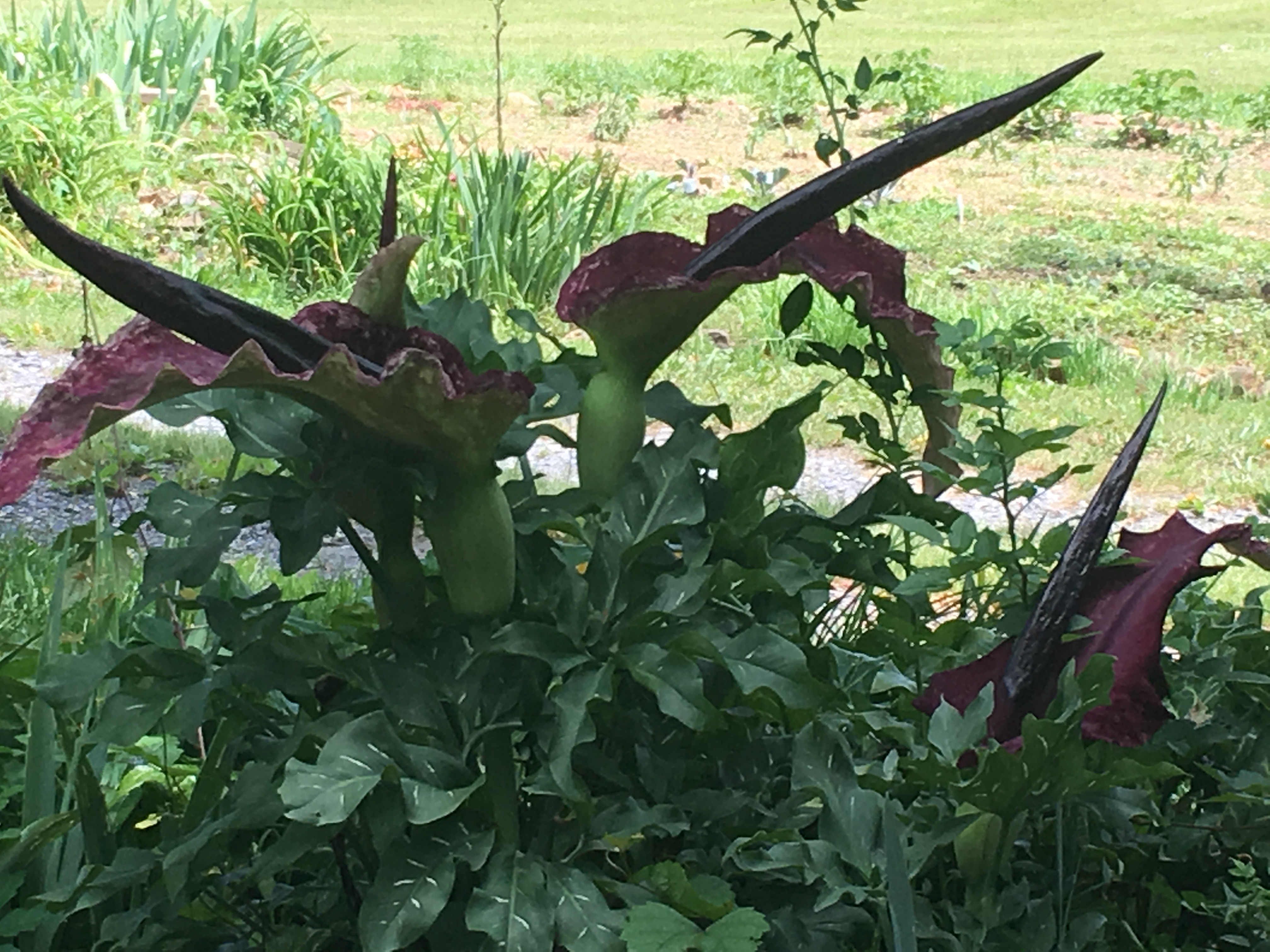
Even that wasn’t truly necessary, but I suspect they put it up as representing their idea of progress. If there are any particular things the county might be known for, it is its history of making moonshine (now wines, hard ciders, and spirits) and its homegrown peaches. Little did I suspect one day I’d be introduced to Dragon’s Arum (Dracunculus vulgaris) for the first time in good ol’ Nelson County.
You see, a car group consisting typically of four people including myself makes trips throughout the county to preach and offer free home Bible studies to each of our neighbors. We enjoy one another’s company and conversing about many things. And, we keep our eyes and ears open. We visit the homes and observe quite a bit of landscaping. We glimpse quite a few animals, most of them your typical assortment: cats, dogs, rabbits, snakes, terrapins, skunks, raccoons, groundhogs, opossums, chipmunks, Canada geese, herons, and vultures (we call ‘em buzzards).
We take special delight when we see something new. Nelson County holds many surprises. For instance, we once pulled into the driveway of a home where wolves are raised. Mature specimens walk about openly. Yes we have bears, bobcats and eagles. Once we had to slow down to avoid hitting an escaped pot-bellied pig. Another time we saw three camels (not llamas—genuine camels). Yes, we have llamas, miniature ponies, pigs, cows, and horses.
But let’s get back to Dragon’s Arum. One of the ladies spotted this plant. Ordinarily very open-minded, she wondered why anyone would grow the plant. She uttered words such as ‘it smells like garbage, rotten meat.’ I took a typical man’s perspective. I was fascinated and wanted a photo (the one you see here).
Actually, the plant doesn’t produce a bad odor continually, but during the time of pollination. Flies, not bees, are the prime pollinators. The plant, because of its appearance, gives rise to myths. It is a skin irritant and its root is toxic. It should not be ingested. It thrives best in near-neutral soil and full sun, though it tolerates shade. Native in exotic lands, it has been cultivated in many lands. D. vulgaris, as seen in the cutaway image, produces both male and female flowers that result in typical arum berries.
Below is an excellent 25-second visual presentation of Dragon’s Arum in bloom during the time of pollination. Of particular interest in the pollination is that the flower traps the pollinators within the flowering section, due to the smoothness of the spathe. They cannot climb out until days later when the pollination process is complete and the surfaces wither.
Note: You might also enjoy Spring Daffodils – Grim Hurricane Reminders
References: